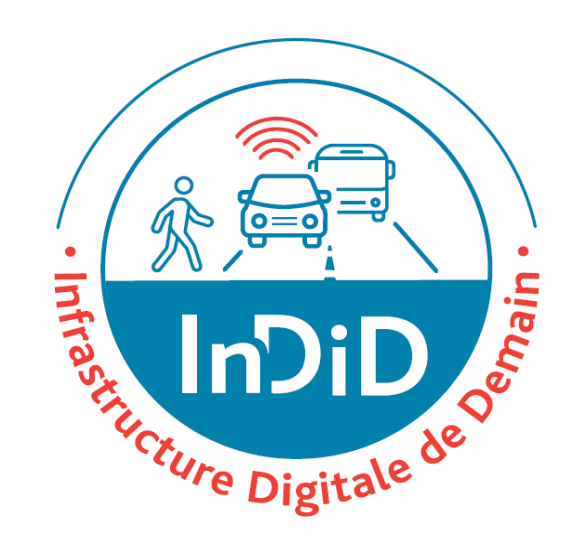Pilot sites
The 8 InDiD pilot sites are located in 4 major French geographical basins, on the Mediterranean coast, in the south-west, in the centre and in the north of France. Their nomenclature is based on that of activity 3 (see " Project Design" section).

They are organised as follows:
A3.1 - Mediterranean
This pilot site brings together the DIRMED, ESCOTA (Vinci Group), the City of Aix-en-Provence and the Aix-Marseille-Provence Metropolitan Authority. The pilot site covers the entire network of operators. The challenges of this pilot site are related to its character as a dense urban site. Equipped with a major traffic management system, the area's objective is to upgrade this system by integrating more advanced C-ITS functionalities.
Various use cases are being deployed (in particular those linked to the urban environment) as well as new RSU and OBUo equipment (including on-board bus equipment).
A3.2 - South-West
A3.2.1 - Poitiers / Bordeaux / Spain
This sub-site involves the DIRA and Bordeaux Metropolitan Area and covers approximately 200km of motorway in the Bordeaux urban area. A number of use cases are being studied, in particular information on car parks in the Bordeaux urban area. The DIRA has also installed new RSU and OBUo equipment and tested HD mapping tools designed to improve the integration of automated vehicles on the network.
A3.2.2 - Toulouse / Spain
This sub-site brings together DIRSO and ASF (Vinci Group) and covers the road/motorway network managed by the two operators in the Toulouse urban area (A64, A620, A621, A624 for DIRSO; A61 and part of A64 for ASF). Equipment deployed on this site is accompanied by the installation of the necessary IT systems for operation and data exchange.
A3.2.3 - Centre-West
DIRCO manages this sub-site. In addition to the RSU and OBUo terminals and the associated IT developments, DIRCO is working on implementing the "detection of wrong way vehicles" use case (use case A5 in the use case catalogue), which makes it possible to respond to road safety issues on its network.
A3.3 - North
A3.3.1 - Ile-de-France A6
This sub-site brings together APRR, IGN and VALEO and is dedicated to tests on use cases for autonomous vehicles, particularly for crossing toll barriers. IGN's support makes it possible to work on HD mapping of the vehicle's environment.
A3.3.2 - Ile-de-France Urban Innovation District
In collaboration with ATC, the City of Paris is developing on this sub-site, in the 13th district, experiments related to autonomous vehicles in an urban environment, dealing with issues such as crossing traffic signals or pedestrian detection.
A3.3.3 - Ile-de-France A86 (Conurbation experimentation)
This sub-site supported by COFIROUTE aims to deploy equipment in the A86 tunnel and in the sector of the A10 between Bris sous Forge and the Saint Arnoult toll plaza. RSUs have been deployed in this high-risk area, along with the IT developments required to ensure they operate correctly.
A3.3.4 - North
This sub-site involves SANEF, the DIRN and the DIRE. It covers a large network of approximately 1500km of motorways. SANEF is primarily concerned with the west of the network, in Normandy, as the east has already been equipped through previous projects. The planned deployments are RSU, OBUo, as well as several use cases for each of the operators.
A3.3.5 - West
DIRO, in association with COFIROUTE, is coordinating this sub-site, which is being deployed on the A10 motorway around Tours. The operators are drawing on the successful experiences of previous projects (SCOOP, C-ROADS France) in order to specify the use cases and update the equipment.
A3.3.6 - East
This sub-site brings together the Strasbourg Eurometropole (EMS) and the European Collectivity of Alsace (CeA). The CeA is deploying RSUs on its network, mainly on the A35 and A36, and is developing several use cases, some of which relate to traffic conditions and obstacles on the road. They also deal with the specific problem of snow-covered roads. The EMS focuses more on urban use cases such as information on contra-flow cycle lanes.
A3.4 - Centre-East
AREA, the DIRCE and the Isère department are jointly responsible for this pilot site. On the AREA network in particular, several use cases are being deployed related to road works or snow clearing operations, based on new RSU installations. AREA also plans to share real-time information on the opening of a dedicated car-sharing lane on the A480.
